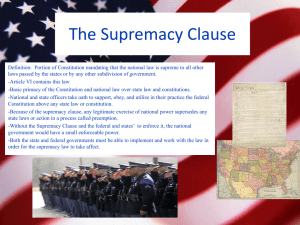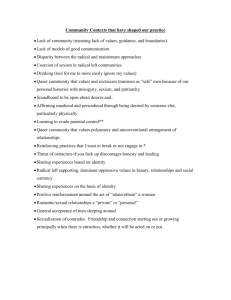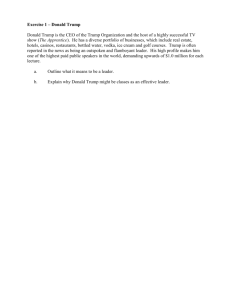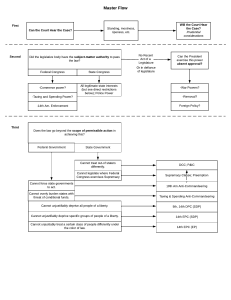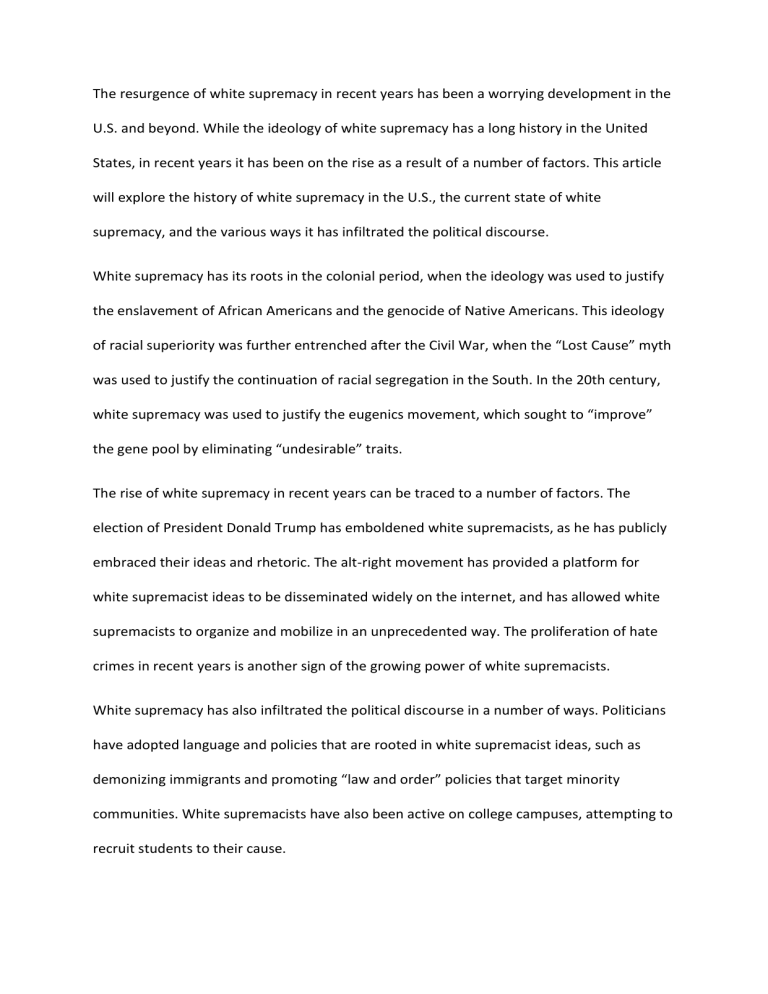
The resurgence of white supremacy in recent years has been a worrying development in the U.S. and beyond. While the ideology of white supremacy has a long history in the United States, in recent years it has been on the rise as a result of a number of factors. This article will explore the history of white supremacy in the U.S., the current state of white supremacy, and the various ways it has infiltrated the political discourse. White supremacy has its roots in the colonial period, when the ideology was used to justify the enslavement of African Americans and the genocide of Native Americans. This ideology of racial superiority was further entrenched after the Civil War, when the “Lost Cause” myth was used to justify the continuation of racial segregation in the South. In the 20th century, white supremacy was used to justify the eugenics movement, which sought to “improve” the gene pool by eliminating “undesirable” traits. The rise of white supremacy in recent years can be traced to a number of factors. The election of President Donald Trump has emboldened white supremacists, as he has publicly embraced their ideas and rhetoric. The alt-right movement has provided a platform for white supremacist ideas to be disseminated widely on the internet, and has allowed white supremacists to organize and mobilize in an unprecedented way. The proliferation of hate crimes in recent years is another sign of the growing power of white supremacists. White supremacy has also infiltrated the political discourse in a number of ways. Politicians have adopted language and policies that are rooted in white supremacist ideas, such as demonizing immigrants and promoting “law and order” policies that target minority communities. White supremacists have also been active on college campuses, attempting to recruit students to their cause. It is clear that white supremacy is a growing threat in the United States and beyond. It is essential that we recognize the insidious ways in which white supremacy is infiltrating the political discourse and take steps to combat it. This means challenging white supremacist ideas whenever they arise, educating ourselves and others about the history and ideology of white supremacy, and supporting organizations that are working to combat hatred and bigotry. Donald Trump's relationship with white supremacist and white nationalist groups has been a contentious issue for much of his time in politics. Despite never explicitly saying that he supports these groups, Trump has regularly been accused of promoting white supremacy through his words and actions. Trump's past comments, such as his defense of those who attended the 2017 Unite the Right rally and his failure to denounce the Proud Boys in the 2020 presidential debate, have been interpreted as tacit approval of white supremacy. He has also been criticized for having advisers with white nationalist connections, such as Stephen Miller, and for praising Kyle Rittenhouse, who was acquitted of murder charges after killing two people during Black Lives Matter protests in 2020. More recently, Trump was criticized for dining with the rapper Ye, who has recently come under fire for his antisemitic comments, and white supremacist and Holocaust denier Nick Fuentes at his Florida club, Mar-a-Lago. Trump's statement about the dinner, in which he failed to denounce either Fuentes or Ye, was seen as a tacit defense of white supremacy. The evidence suggests that, while Trump has never explicitly supported white supremacist and white nationalist groups, he has allowed them to become an indispensable part of his base by pandering to their views and defending their actions. Trump's flirtation with white extremism has gone beyond simply allowing the groups to become part of his base; he has actively sought to gain their approval and support, and his failure to strongly condemn their views and actions has been interpreted as tacit approval of white supremacy.
